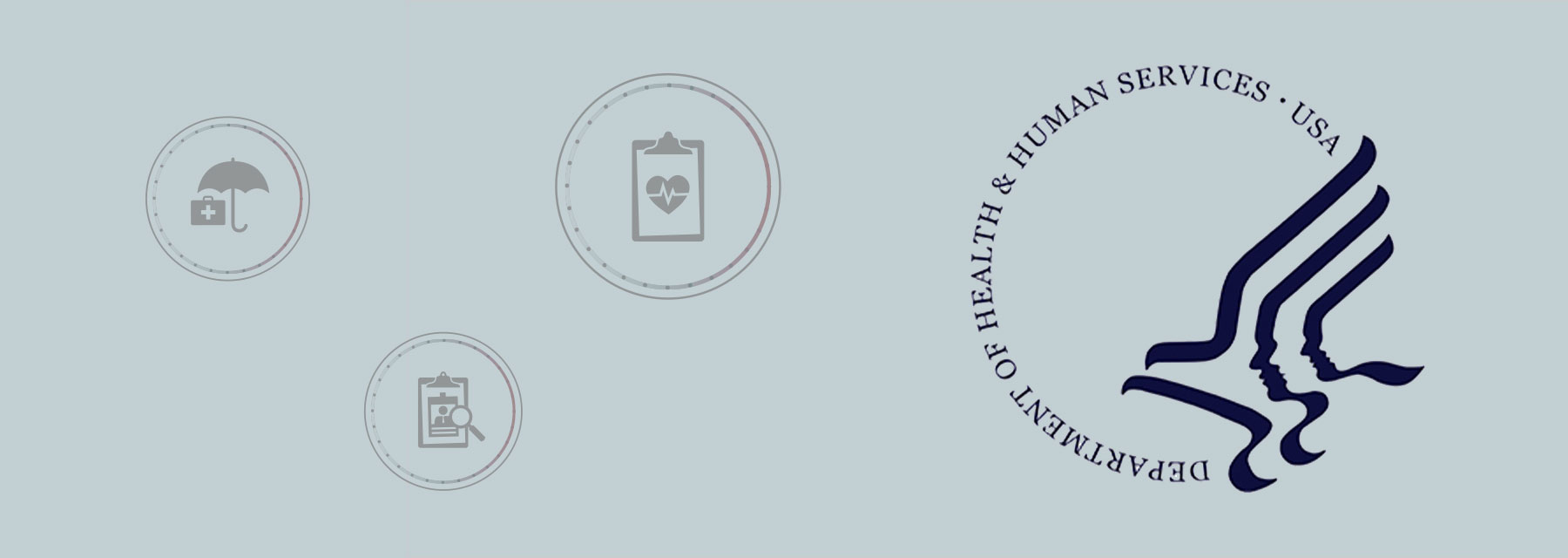On October 28, 2020, the Department of Labor, Department of Health and Human Services and the Department of Treasury (Departments) released the Final Rule on Transparency in Coverage (Final Rule), which aims to equip consumers with necessary information to make informed health care decisions and encourage lower healthcare prices.
The Final Rule (1) requires group health plans and insurers to disclose personalized cost-sharing estimates to plan participants before they receive care; (2) requires group health plans and insurers to disclose detailed pricing information to the public; and (3) provides insurers with Medical Loss Ratio (MLR) credits if their plan design encourages and results in savings by plan participants.
Compliance Snapshot
- For plans beginning on or after January 1, 2022, group health plans and insurers will be required to make in-network, out-of-network, and prescription drug rates available to the public.
- For plans beginning on or after January 1, 2023, group health plans and insurers will be required to provide personalized cost-sharing estimates for in-network and out-of-network services to plan participants.
- Employers can contract with carriers or third parties to provide the disclosures required under the Final Rule.
Background
In June 24, 2019, President Trump issued an Executive Order on Price Quality and Transparency, which directed the Departments to propose regulations requiring hospitals, insurers, and group health plans to provide pricing information to consumers before they receive care. The Department of Health and Human Services issued the Final Rule on Hospital Transparency in November 2019 and it was immediately challenged by hospitals. The Final Rule on Hospital Transparency is currently being litigated and making its way through the courts.
In October 2020, the Departments issued the Final Rule on Transparency in Coverage, which applies to group health plans and insurers. It is important to note that the Final Rule relies on legal authority provided under the Affordable Care Act (ACA), which is currently being challenged before the United States Supreme Court (USSC). If the Affordable Care Act (ACA) is repealed, then it is likely the Final Rule will not go into effect. If the ACA is upheld, it is likely the Final Rule will be challenged in court, similarly to the Final Rule on Hospital Transparency.
Application of the Final Rule
The Final Rule imposes disclosure obligations on group health plans (including fully insured, level funded, and self-insured plans) and health insurers on the individual and group markets. The Final Rule does not apply to grandfathered group health plans, health flexible spending arrangements (FSAs), or individual coverage health reimbursement arrangements (ICHRAs).
This means that employers sponsoring group health plans will be subject to the disclosure requirements under the Final Rule.
- Fully insured employers can contract with their carrier or a third party to provide these disclosures. If a contract is entered into, the carrier (not the employer) will be held liable for any failure to provide disclosures.
- Self-insured and level-funded employers can contract with a third party (such as a Third Party Administrator- TPA) to provide disclosures, though the employer (not the TPA) will be held liable for failure to comply. Employers could, however, enter into contractual agreements whereby a TPA agrees to indemnify the employer in the event they fail to provide disclosures.
Disclosures to Plan Participants, Beneficiaries, Enrollees
Plans and insurers must provide plan participants with personalized out-of-pocket cost estimates for requested covered items and services by a particular provider or providers. This disclosure must be made through a user-friendly online self-service tool or by paper, upon request.
Information Required to be Disclosed: Upon request, plans and insurers must disclose seven “content elements” to current plan participants and beneficiaries:
- Estimated cost-sharing liability: Estimate of the amount a plan participant is responsible for paying for a covered item or service by a particular provider or providers under the terms of the plan. The disclosure must include any applicable cost-sharing, including deductibles, co-insurance, and co-payments, but does not include premiums, any balance billing for out-of-network providers, or cost of non-covered items. These estimates are not required to reflect the actual or final cost of the item or service.
- Accumulated Amounts: At the time of the request, the amount a plan participant has paid towards the plan’s deductible and/or out-of-pocket maximum must be provided. In addition, the disclosure must include amounts accrued toward any cumulative treatment limit (e.g. number of physical therapy visits used compared to the limit on physical therapy visits under the plan).
- In-Network Rates: The amount the insurer has agreed to pay to the in-network provider for the requested item or service.
- Out-of-Network Allowed Amounts: The maximum amount a plan or insurer would pay for the requested item or service provided by an out-of-network provider.
- List of Items and Services Subject to Bundled Payment Arrangements: If a plan participant requests cost-sharing information for an item or service that is subject to a bundled payment arrangement, plans and insurers would be required to disclose a list of each covered item and service and the cost-sharing liability for the bundle (but not each item or service).
- Notice of Prerequisites: Whenever applicable, plans and insurers must inform plan participants that the requested item or service may be subject to a prerequisite for coverage (e.g. pre-authorization) before the item or service will be covered.
The information disclosed must contain actual data relevant to a plan participant’s cost-sharing liability, be accurate at the time it was disclosed, and be written in “plain language.”
Disclosure Method: Plans and insurers must provide disclosures in two ways:
- Self-Service Online Tool: The online tool must enable plan participants to look up cost sharing information for a covered item or service provided by an in-network provider, all in-network providers, and out-of-network providers using a billing code (e.g. CPT code) or a descriptive term (e.g. “rapid flu test”). The tool should allow plan participants to filter results by geographic location and cost-sharing liability.
- Paper Form: At the request of a plan participant, the required disclosures must be provided in a paper format within two day of a request.
Effective Date: For plans that begin on or after January 1, 2023, plans and insurers must provide estimates for an initial list of 500 items and services. This initial list will be determined by the Departments and published on its website. For plans that begin on or after January 1, 2024, estimates for all items and services must be provided.
Disclosures to the Public
Plans and insurers must make available specific pricing information to the public. The Departments hope this public disclosure of pricing will increase competition, reduce disparities in healthcare prices, and lower healthcare costs.
Information Required to Be Disclosed: Disclosures must be provided on three “machine readable files,” which include:
- Negotiated rates for all items and services with in-network providers;
- Payments to and billed charges from out-of-network providers during a specified period; and
- Negotiated rates for prescription drugs furnished by in-network providers during a specified period.
The Final Rules outline specific information and formatting that these files must include, which is not covered in this article.
Disclosure Method: The files must be made available on the plan or insurer’s website free of charge and updated with new information monthly.
Effective Date: Plans that begin on or after January 1, 2022, must make available information to the public.
MLR Rebate Calculation Changes
The ACA requires insurers to provide MLR rebates to policyholders (e.g. employers) if a certain percentage of premiums were not spent on healthcare or improvement activities. Under the Final Rule, if insurers provide plans that encourage plan participants to shop for lower-cost, higher-value providers and it results in savings by plan participants, insurers can take credit for the “shared savings” in their MLR calculations.
Effective Date: Insurers can claim these “shared savings” beginning with the 2020 MLR reporting year (for reports filed by January 31, 2021).
Employer Action
- If the Final Rules go into effect, fully insured employers should contract with their carrier to provide the required disclosures to the public and to plan participants.
- Self-insured employers should contract with their TPA (or other third party) to provide the required disclosures and should be sure to include any necessary contractual language to limit their liability if the third party fails to provide the disclosures.
The first disclosure requirements are scheduled to go into effect for plans beginning January 1, 2022.
Additional Resources
- Transparency in Coverage Final Rule
- Final Rule Fact Sheet, Announcement, and Summary
- Executive Order on Price Quality and Transparency
Disclaimer: This content is intended for informational purposes only and should not be construed as legal, medical or tax advice. It provides general information and is not intended to encompass all compliance and legal obligations that may be applicable. This information and any questions as to your specific circumstances should be reviewed with your respective legal counsel and/or tax advisor as we do not provide legal or tax advice. Please note that this information may be subject to change based on legislative changes. © 2020 Sequoia Benefits & Insurance Services, LLC. All Rights Reserved




